
Extractive summaries and key takeaways from the articles carefully curated from TOP TEN BUSINESS MAGAZINES to promote informed business decision-making | Since 2017 | Week 386 | January 31- February 6, 2025 | Archive
Listen to this week’s newsletter in audio
Shaping Section
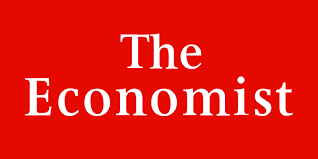
Milei, Modi, Trump: an anti-red-tape revolution is under way
The Economist | January 30, 2025
Extractive Summary of the Article | Listen
3 key takeaways from the article
- In one important way Mr Trump is part of a global trend. From Buenos Aires and Delhi to Brussels and London, politicians have pledged to slash the red tape that entangles the economy. Javier Milei has wielded a chainsaw against Argentine regulations. Narendra Modi’s advisers are quietly confronting India’s triplicate-loving babus. Rachel Reeves, Britain’s chancellor, plans to overhaul planning rules and expand London’s Heathrow Airport. Even Vietnam’s Communists have a plan to shrink the bureaucracy.
- Done right, the anti-red-tape revolution could usher in greater freedom, faster economic growth, lower prices and new technology. For years excessive rules have choked housebuilding, investment and innovation.
- The question is how to make reform bold enough to count, but coherent enough to succeed. One example to follow is Argentina. Mr Milei’s team came into office having spent 18 months working out how to extract the government from areas where it did not belong. Once in power, they wasted no time in using bold strokes to reset expectations about the economy. Europe needs DOGE-type ambition, while America needs Milei-type preparation. The danger is that neither will get this right.
(Copyright lies with the publisher)
Topics: Deregulation, Growth, EU, USA, Poverty-allievation, Small Businesses
Click for the extractive summary of the articleIn one important way Mr Trump is part of a global trend. From Buenos Aires and Delhi to Brussels and London, politicians have pledged to slash the red tape that entangles the economy. Javier Milei has wielded a chainsaw against Argentine regulations. Narendra Modi’s advisers are quietly confronting India’s triplicate-loving babus. Rachel Reeves, Britain’s chancellor, plans to overhaul planning rules and expand London’s Heathrow Airport. Even Vietnam’s Communists have a plan to shrink the bureaucracy.
Done right, the anti-red-tape revolution could usher in greater freedom, faster economic growth, lower prices and new technology. For years excessive rules have choked housebuilding, investment and innovation. The question is how to make reform bold enough to count, but coherent enough to succeed.
Ambition is needed because of the sheer quantity of today’s rules. As the Economist’s Briefing sets out, Americans spend a total of 12bn hours a year complying with federal rules. The federal code runs to 180,000 pages, up from 20,000 in the 1960s. In the past five years the European Parliament has enacted more than twice as many laws as America. Businesses are required to make painstaking sustainability disclosures, filling in more than a thousand fields on an online form—an undertaking that is estimated to cost a typical firm in Denmark €300,000 ($310,000) every year. In Britain, well-meaning rules protecting bats, newts and rare fungi combine to obstruct, delay and raise the cost of new infrastructure.
This proliferation of red tape reflects how the world is changing. The rise of the internet means that countries need codes to protect people from online scams; the warming planet demands rules to limit carbon emissions. Governments, petitioned by interest groups, often find it convenient to load the cost of compliance onto others. After the global financial crisis dented faith in capitalism, trusting the market to encourage good behaviour has seemed naive. Voters have also sought more regulation.
The trouble is that, even as particular groups benefit from each rule, society at large bears its costs. In much of the rich world getting anything built has become a daunting task. Over-regulation most hurts small businesses, which lack compliance departments, deterring innovative newcomers from setting up shop. Incumbents, meanwhile, feel less incentive to invest because they know they are sheltered. And rules beget rules, as regulators find new things to regulate. Lumbered by regulation and ageing populations, economic growth and productivity in the rich world have slowed to a crawl.
That is why deregulation is so important. Yet the path ahead is strewn with pitfalls. The conundrum is how to be bold without being reckless. Rules and government are essential in any society. Redistribution makes America fairer, and so more stable. Without rules on food safety, road markings or bank capital, and the bureaucrats to enforce them, life would be shorter and less secure.
One example to follow is Argentina. Mr Milei’s team came into office having spent 18 months working out how to extract the government from areas where it did not belong. Once in power, they wasted no time in using bold strokes to reset expectations about the economy. Europe needs DOGE-type ambition, while America needs Milei-type preparation. The danger is that neither will get this right.
show less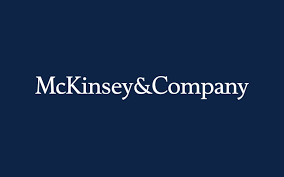
Geopolitics and the geometry of global trade: 2025 update
By Jeongmin Seong et al. | McKinsey Global Institute | McKinsey & Company | January 27, 2025
Extractive Summary of the Article | Listen
3 key takeaways from the article
- Every major region relies on imports for more than 25 percent of its consumption of at least one type of critical resource, manufactured good, or service.
- McK analyzes the changing geometry of global goods trade using four measures: trade intensity, geographic distance, geopolitical distance, and import concentration. The pattern of reconfiguration has continued, but its character and pace differ among major economies.
- Trade relationships are continuing to reconfigure, and changing geopolitics is a major reason. The United States has continued to shift trade away from China and toward other economies such as Mexico and Vietnam. In some cases, this is due to these economies forming an intermediate step in trade flows between China and the United States. European economies have moved away from trade with Russia and increased trade with other partners, notably the United States. Developing economies, rather than advanced ones, now account for the majority of China’s imports and exports. Economies such as the Association of Southeast Asian Nations (ASEAN), Brazil, and India continue to strengthen trade ties across the geopolitical spectrum.
(Copyright lies with the publisher)
Topics: Global Trade, USA, Europe, China, ASEAN, Geo-political divide, Geographical Distance and Trade, Trade Intensity
Click for the extractive summary of the articleTrade binds economies around the world. Every major region relies on imports for more than 25 percent of its consumption of at least one type of critical resource, manufactured good, or service. Trade relationships are continuing to reconfigure, and changing geopolitics is a major reason.
Although all economies engage in trade, each has its own distinct trade footprint. McK analyzes the changing geometry of global goods trade using four measures: trade intensity, geographic distance, geopolitical distance, and import concentration. These metrics provide valuable insights into the unique trade characteristics of different economies.
Economies vary in how much they trade in comparison to their size; this is their trade intensity. Economies also vary in their patterns of trade partners in both where they are, or geographic distance, and how aligned they are on global issues, or geopolitical distance. Finally, economies differ in how broad or narrow their network of supply relationships is, or their import concentration.
Goods trade intensity in ASEAN and Germany is higher because of their integration in cross-border manufacturing value chains. The goods trade intensity of the United States is lower than that of many other large economies due in part to its large domestic economy and natural endowments. Brazil’s trade travels farther geographically than that of many economies because of its significant trade with China. Germany and the United Kingdom tend to trade over shorter geographic distances than other major trading economies, reflecting the relatively compact nature of Europe’s economies. China’s relatively high geopolitical distance of trade is driven by its extensive trade with Australia, the EU, Japan, South Korea, and the United States. Germany and the United Kingdom trade over shorter geopolitical distances because of their high share of trade with geopolitically proximate European economies. Overall, large economies tend to have lower levels of import concentration than the global average. Germany’s import concentration is relatively low, reflecting extensive intra-European trade. Brazil’s is higher because of significant imports from China.
Taken together, these shifts suggest that a new trade dynamic is emerging between China and the United States, with ASEAN economies becoming increasingly integrated as intermediate steps in the global value chains that link the two largest economies. This is one of the reasons the US trade shift away from China is much smaller in value-added terms than in the import and export trade data. Broadly, China adds value to a product that is exported to ASEAN, and China’s value added is therefore embedded in the goods that ASEAN exports to the United States.
The ongoing shifts in global trade are one part of the evolving geopolitical landscape of which organizations are well aware, and they are now crafting strategies accordingly. It makes sense for organizations to monitor changes in the geometry of trade, such as trends in geopolitical distance, as part of their response. This response can also include understanding the implications of potential trade tariffs and the strategic opportunities they may provide. Organizations can also be proactive in attempts to accelerate growth, optimize business operations, and build capabilities and strategies to help them respond to geopolitical disruption, for instance through structural segmentation. The shifting geopolitical geometry may create risks, but carefully navigating it may deliver opportunities, too.
show less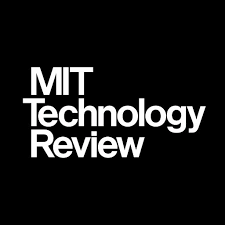
OpenAI’s new agent can compile detailed reports on practically any topic
By Rhiannon Williams | MIT Tech Review | February 3, 2025
Extractive Summary of the Article | Listen
3 key takeaways from the article
- OpenAI has launched a new agent capable of conducting complex, multistep online research into everything from scientific studies to personalized bike recommendations at what it claims is the same level as a human analyst. The tool, called Deep Research, is powered by a version of OpenAI’s o3 reasoning model that’s been optimized for web browsing and data analysis. It can search and analyze massive quantities of text, images, and PDFs to compile a thoroughly researched report.
- OpenAI claims the tool represents a significant step toward its overarching goal of developing artificial general intelligence (AGI) that matches (or surpasses) human performance. It says that what takes the tool “tens of minutes” would take a human many hours.
- This doesn’t mean that Deep Research is immune from the pitfalls that befall other AI models. OpenAI says the agent can sometimes hallucinate facts and present its users with incorrect information, albeit at a “notably” lower rate than ChatGPT.
(Copyright lies with the publisher)
Topics: Technology, Artificial Intelligence, Analysis, Deep Research, OpenAI
Click for the extractive summary of the articleOpenAI has launched a new agent capable of conducting complex, multistep online research into everything from scientific studies to personalized bike recommendations at what it claims is the same level as a human analyst.
The tool, called Deep Research, is powered by a version of OpenAI’s o3 reasoning model that’s been optimized for web browsing and data analysis. It can search and analyze massive quantities of text, images, and PDFs to compile a thoroughly researched report.
OpenAI claims the tool represents a significant step toward its overarching goal of developing artificial general intelligence (AGI) that matches (or surpasses) human performance. It says that what takes the tool “tens of minutes” would take a human many hours.
In response to a single query, such as “Draw me up a competitive analysis between streaming platforms,” Deep Research will search the web, analyze the information it encounters, and compile a detailed report that cites its sources. It’s also able to draw from files uploaded by users.
OpenAI developed Deep Research using the same “chain of thought” reinforcement-learning methods it used to create its o1 multistep reasoning model. But while o1 was designed to focus primarily on mathematics, coding, or other STEM-based tasks, Deep Research can tackle a far broader range of subjects. It can also adjust its responses in reaction to new data it comes across in the course of its research.
This doesn’t mean that Deep Research is immune from the pitfalls that befall other AI models. OpenAI says the agent can sometimes hallucinate facts and present its users with incorrect information, albeit at a “notably” lower rate than ChatGPT. And because each question may take between five and 30 minutes for Deep Research to answer, it’s very compute intensive—the longer it takes to research a query, the more computing power required.
Despite that, Deep Research is now available at no extra cost to subscribers to OpenAI’s paid Pro tier and will soon roll out to its Plus, Team, and Enterprise users.
show lessStrategy & Business Model Section
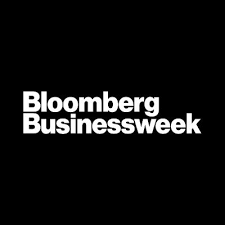
How Long Can Toyota Put Off Figuring Out EVs
By Reed Stevenson and Chester Dawson | Bloomberg Businessweek | January 15, 2025
Extractive Summary of the Article | Listen
2 key takeaways from the article
- Outside of EVs, Toyota is doing not only fine, but great. While it has lagged behind even old-school competitors in transitioning its production lines to all-electric models, the past year made that look smart. Demand for electric cars continued to grow, but not as quickly as the $3 trillion auto industry had wagered while pouring untold billions of dollars into their development. Toyota’s products, meanwhile, were about two-thirds internal combustion, one-third hybrid and 0.1% electric, and it cleaned up. It pulled further ahead of its longtime rivals (Volkswagen, Hyundai, GM) and is estimated to have sold more than 11 million vehicles in 2024, compared with 1.8 million for Tesla and 4.3 million for BYD (1.8 million of which were electric).
- Chairman Akio Toyoda has insisted on a “multi-pathway strategy,” which in practice has meant hybrids, gas-guzzlers and even hydrogen-powered cars.
(Copyright lies with the publisher)
Topics: Strategy, Business Model, Combustion Engine, Electric Vehicles
Click for the extractive summary of the articleOutside of EVs, Toyota is doing not only fine, but great. While it has lagged behind even old-school competitors in transitioning its production lines to all-electric models, the past year made that look smart. Demand for electric cars continued to grow, but not as quickly as the $3 trillion auto industry had wagered while pouring untold billions of dollars into their development. Toyota’s products, meanwhile, were about two-thirds internal combustion, one-third hybrid and 0.1% electric, and it cleaned up. It pulled further ahead of its longtime rivals (Volkswagen, Hyundai, GM) and is estimated to have sold more than 11 million vehicles in 2024, compared with 1.8 million for Tesla and 4.3 million for BYD (1.8 million of which were electric). Chairman Akio Toyoda has insisted on a “multi-pathway strategy,” which in practice has meant hybrids, gas-guzzlers and even hydrogen-powered cars. Although Toyoda, who’s 68, ceded the role of chief executive officer to former Lexus boss Koji Sato in 2023, the chairman’s word remains the one that matters.
Toyoda has fiercely defended his multi-pathway strategy as a function of customer demand, but there’s something personal to it as well. Apart from his family legacy, he’s a lifelong fan of race cars and, as he said at the Tokyo Motor Show some years back, “the smell of gasoline and a lot of noise.” His commitment to old-school automaking has left Sato, the newish CEO and a veteran Toyota engineer, to figure out the details of securing the company’s future without massively overhauling its present.
When he took the CEO job in 2023, Sato promised Toyota would sell 1.5 million battery-electric cars in 2026. At this point, that’s looking more like a fantasy. But occasional peeks inside Toyota’s facilities have suggested something resembling a game plan.
It’s not just Toyota that’s having trouble future-proofing itself. GM, the leader among Detroit’s Big Three automakers, has walked back its pledge to go all-electric by 2035. Ford, which has set up a separate electric division, has put some of its EV strategy on hold. Volkswagen AG is investing as much as $5 billion in electric startup Rivian Automotive Inc., which is a long way from paying off. Rivian has been losing an average of $39,000 on every vehicle it sells.
There is, of course, a precedent for Toyota’s leadership in this area. It’s called the Prius. Kids who grew up in one can scarcely imagine how radical it was in the late 1990s to combine a gas engine with an electric motor to get nearly 50 mpg in a mass-market car. The added complications effectively doubled the cost of the drivetrain over conventional models and guaranteed Toyota would lose money on every hybrid sold for years. This move was, in many ways, seemingly anathema to TPS. But Hiroshi Okuda, the firebrand who was Toyota’s president and then chairman for about a decade starting in the mid‑’90s, pushed to spend the money to diversify the company’s technology and footprint. Okuda has since largely disappeared from official company histories. He broke ranks by opposing the Toyoda family’s return to control.
Today there’s a Toyoda who’s been tasked with thinking boldly. Daisuke, Akio’s son, is senior vice president at a subsidiary working on self-driving technology and other longer-term bets. But right now that’s not where Toyota is headed. Instead, earlier this year the company announced it’s working on a whole new class of internal combustion engines that will one day be able to burn different types of liquid fuel, including cleaner ones such as hydrogen. Toyota says the engines’ smaller size and higher output will make them ideal for next-generation hybrids.
“We know there will be critics who think, ‘Why now?’ ” Nakajima, the CTO, said from the sidelines of a Le Mans-style endurance race at Fuji Speedway this spring. “We know EVs are the future. But until we get there, we’re going to keep trying to get better at what we do best.”
show less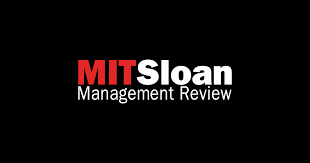
The New Challenges of Brand Management
By Marcus Collins | MIT Sloan Management Review Magazine | Spring 2025 Issue
Extractive Summary of the Article | Listen
3 key takeaways from the article
- While marketers painstakingly craft brand messages and creative campaigns intended to appeal to their target customers, it’s the customers who actually make meaning and, consequently, shape a brand’s reputation.
- In the social media age, that meaning has become ever more freighted with cultural and political implications, not only for brand image but also for customers’ own identities and reputations. This newly mediated discourse between consumers and brands has created new challenges for contemporary brand managers to not merely steward a brand’s communication and intellectual property but also manage the brand’s meaning as consumers themselves shape the meaning of the brand to relate to their own identities.
- It’s not enough to trust that your product performs well or that your customers are emotionally connected to the brand; today, that “love” is conditional. Consumers want to know where the brand stands on social issues; they want it to pick a side to ensure that their consumption is congruent with their representation of self.
(Copyright lies with the publisher)
Topics: Marketing Strategy, Business Model, Social Media, Brand Love, Social Constructionism
Click for the extractive summary of the articleThe image and meaning a brand conveys have never been entirely within the owner’s control; they have always been in dialogue with the world around them. While marketers painstakingly craft brand messages and creative campaigns intended to appeal to their target customers, it’s the customers who actually make meaning and, consequently, shape a brand’s reputation. In the social media age, that meaning has become ever more freighted with cultural and political implications, not only for brand image but also for customers’ own identities and reputations. This newly mediated discourse between consumers and brands has created new challenges for contemporary brand managers to not merely steward a brand’s communication and intellectual property but also manage the brand’s meaning as consumers themselves shape the meaning of the brand to relate to their own identities.
In today’s hyperconnected world, social networking platforms have become our primary means of learning about news events and keeping track of our social groups. These contemporary town squares serve as a public forum where people can both debate social issues and negotiate consumption decisions. In fact, someone’s take on a political matter might be quickly followed by a post about their new purchase in our newsfeeds. The two have become so intertwined that a brand selection can often be considered a vote cast on a social issue.
These associations are publicly constructed and policed through the same channels where people curate their identities — such as Instagram, Facebook, and TikTok. The result of this dynamic is that today’s most powerful and sought-after brands have been situated as the marks that most accurately represent a consumer’s cultural identity. These brands have evolved from lovemarks to identity marks that people use to communicate to the world who they are and to which cultural communities they subscribe.
Brands have leaned into this shift to establish stronger connections with consumers and woo potential buyers who subscribe to similar cultural views.
Successful brands identified a point of view beyond their product categories as a way to project ideological meaning and attract like-minded consumers. This symbiotic relationship has increased consumers’ expectations of brands. It’s not enough to trust that your product performs well or that your customers are emotionally connected to the brand; today, that “love” is conditional. Consumers want to know where the brand stands on social issues; they want it to pick a side to ensure that their consumption is congruent with their representation of self.
show less
7 Business Lessons From Texas Billionaire Fernando De Leon
By Monica Hunter-Hart | Forbres | February 2, 2025
Extractive Summary of the Article | Listen
3 key takeaways from ther article
- Fernando De Leon has one of the more unusual backstories of those on the Forbes Billionaires list. The Mexican-born billionaire helped lift his family out of poverty. Then he made billions building over a dozen businesses in everything from real estate to cardiology to salon services.
- De Leon’s remarkable biography was recognized on Tuesday when he was given the Horatio Alger Award, a prestigious prize for Americans who have overcome adversity to become prominent leaders.
- In recent conversations with Forbes, he shared some of the secrets to his success. Build businesses that improve lives. Remain terrified of being broke. If you want to get rich, own your own business. Immerse yourself in multiple cultures. Hire people who think unconventionally and have endurance. Make sure your managers are experts. And study the competition.
(Copyright lies with the publisher)
Topics: Leadership, Competition, Endurance, Cultures, Improving Lives
Click for the extractive summary of the articleFernando De Leon has one of the more unusual backstories of those on the Forbes Billionaires list. His life began with a lucky break: His pregnant mother crossed over from Matamoros, Mexico into Texas to give birth to him in a U.S. hospital, meaning that De Leon was immediately an American thanks to birthright citizenship—a constitutional protection that President Donald Trump is currently attempting to end.
Though he grew up in Mexico, his status allowed him to attend school in Texas. He crossed the border every morning to get to class. “Constantly pivoting between these two different social systems, seeing the way things do or don’t work in either location,” he tells Forbes, “begins to inform your idea of: why do some companies work? Why do some political systems work? It was pretty formative early on.”
His family fell into poverty when his father died, and he kept them afloat by convincing American real estate big wigs doing developments abroad that he could handle important translation jobs even as young as about 13. That early experience in the real estate world proved useful in 2006 when he founded Leon Capital, which started out developing homebuilder lots and then apartment buildings. The company is now a conglomerate that spans 11 industries, including dentistry, mental health and insurance, and generates over $800 million in revenue. De Leon owns at least 70% of each subsidiary and is worth $2.8 billion, per Forbes estimates.
De Leon’s remarkable biography was recognized on Tuesday when he was given the Horatio Alger Award, a prestigious prize for Americans who have overcome adversity to become prominent leaders. In recent conversations with Forbes, he shared some of the secrets to his success.
- Build businesses that improve lives. “In America, the people that are rewarded are people that build things or companies that provide utility to others,” says De Leon. “We need to invest in things that make people’s lives better. If we do that, capitalism rewards us.” That alone may breed some success, but he adds that building significant wealth also requires affecting a significant number of lives.
- Remain terrified of being broke. Because he grew up with scarcity, De Leon says he has “this fear of being broke that’s constantly tugging at me.” It’s helpful, he explains, because complacency is dangerous. “That fear permeates every decision with a sense of prudence. We’re trying to be conservative with everything.” He’s always looking for ways to save money.
- If you want to get rich, own your own business. Don’t just be an employee; owning a business is one of the best ways to build real wealth, says De Leon. Ownership also incentivizes the hard work that ensures the company’s success—which is one reason why the leaders of Leon Capital’s businesses often have stakes in them.
- Immerse yourself in multiple cultures. “If you look at people who have built businesses, I bet you’ll find that they’ve usually traveled to other countries, worked in other countries, seen other things,” he says. “Some of them are immigrants, some of them are second-generation immigrants, some of them lived abroad.” Becoming immersed in different cultures helps people expand their worldview in ways that benefit their businesses, he says
- Hire people who think unconventionally and have endurance. Speaking of recruitment, here’s what De Leon looks for when hiring top-level employees: “Tell me how you’re able to solve problems that are not institutionally prescribed,” or “Give me a contrarian viewpoint on an existing problem.” Building a successful business often involves disruptive thinking, he says. He also needs leaders who have “endurance” and can handle the inevitable bumps that arise when starting a new company
- Make sure your managers are experts. De Leon makes sure his senior managers are subject matter experts who know every detail of their businesses, including relevant costs at all levels. If a manager can’t answer his questions during a meeting—if, for example, he sees them consulting a direct report for the details—he’ll shift capital away from that business, or possibly even kick them out of the room. Accurate data is essential, he says. “We’re making big decisions. We’ve got to be right.”
- Study the competition. “There are always little things that incumbents kind of fake,” says De Leon. Those are vulnerabilities that you can exploit. Finding weaknesses requires analyzing everything your competitors seem to do successfully with dogged skepticism—and then having enough audacity to believe you can challenge them. “The incumbents always have some kind of unfair advantage. If you can find a way to replicate or beat that, you can pretty much build a business in any industry.”
Personal Development, Leading, and Managing Section
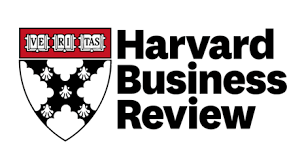
Leaders Shouldn’t Try to Do It All
By A.G. Lafley and Roger L. Martin | Harvard Business Review Magazine | January–February 2025 Issue
Extractive Summary of the Article | Listen
3 key takeaways from the article
- Unlike a company, which can expand capacity to meet increasing demand, a leader is constrained by nature. Many people think they can increase their productivity by working harder. But that, in due course, is a losing game. How leaders can change that?
- Our remedy for the overwhelmed leader comes from an unlikely source: the 19th-century political economist David Ricardo’s theory of comparative advantage – a nation should export those goods (or services) for which it has a comparative advantage over its trading partners.
- A similar logic holds here. Leaders shouldn’t spend their scarce time on activities simply because they are very important. They should do only the things that nobody else in the organization can do nearly as well—if at all. And they should spend as much of their time as possible on them. Need to follow a four-step process in making choices. Remove all tasks for which you lack any absolute advantage. Delegate tasks for which you have little comparative advantage. Take on tasks for which you have a strong comparative advantage. And make sure you have enough time for the tasks that only you can do.
(Copyright lies with the publisher)
Topics: Strategy, Leadership, Comparative Advantage, Productivity
Click for the extractive summary of the articleUnlike a company, which can expand capacity to meet increasing demand, a leader is constrained by nature: As they say, there are only so many hours in a day. Many people think they can increase their productivity by working harder. But that, in due course, is a losing game. They tire, their overall output falls, and they risk burning themselves out and choosing to exit.
In this article the authors explain how leaders can change that. The begin with the perhaps surprising but powerful theory that guides how these two manage their own time.
Our remedy for the overwhelmed leader comes from an unlikely source: the 19th-century political economist David Ricardo. Business leaders most commonly allocate their time by lining up potential tasks according to absolute importance to the organization’s strategy and taking on the most crucial ones until they run out of time. Then they leave the rest to subordinates. Instead they should be guided by Ricardo’s 1817 theory of comparative advantage, still seen as the seminal theory in international trade, which asserts that a nation should export those goods (or services) for which it has a comparative advantage over its trading partners.
A similar logic holds here. Leaders shouldn’t spend their scarce time on activities simply because they are very important. They should do only the things that nobody else in the organization can do nearly as well—if at all. And they should spend as much of their time as possible on them. That is the definition of the authors while leading to win. It was an essential part of the strategic logic that guided them in turning around the organizations they led.
The authors suggest that overwhelmed leaders follow a four-step process in making choices. The first two steps involve getting tasks off their calendars; the second two, putting tasks on. Remove all tasks for which you lack any absolute advantage. Delegate tasks for which you have little comparative advantage. Take on tasks for which you have a strong comparative advantage. And make sure you have enough time for the tasks that only you can do.
show less
The Power of Unlearning: The Science of Changing Your Mind
By Bernard Coleman | Inc Magazine | February 3, 20 25
Extractive Summary of the Article | Listen
3 key takeaways from the article
- In today’s rapidly evolving business landscape, the ability to rethink and adapt isn’t just helpful—it’s essential for survival. Yet many organizations struggle with this fundamental skill, often at great cost to innovation and growth. When someone is sure they’re right or that their way is best, it can block progress, especially at moments when a pivot is required.
- Why is changing one’s mind so hard? Research from Stanford University shows that when people encounter information contradicting their beliefs, their brain reacts emotionally before thinking logically. Resistance to changing our minds stems from three key psychological factors: cognitive dissonance, confirmation bias, and identity protection.
- To facilitate the rethinking process, the author suggest SLIP Approach: Share relatable stories that illustrate new perspectives. Truly hear the other person’s perspective without judgment. Gently guide others toward considering new information. Create a safer space for mind-changing by acknowledging uncertainty, conveying calm, and modeling vulnerability.
(Copyright lies with the publisher)
Topics: Leadership, Entrepreneurship, Success, Resistance to change
Click for the extractive summary of the articleIn today’s rapidly evolving business landscape, the ability to rethink and adapt isn’t just helpful—it’s essential for survival. Yet many organizations struggle with this fundamental skill, often at great cost to innovation and growth. When someone is sure they’re right or that their way is best, it can block progress, especially at moments when a pivot is required.
Why is changing one’s mind so hard? We all have deeply held beliefs, some of which remain so unshakeable that even when faced with contradictory evidence, we will still discount undisputed facts.
Research from Stanford University shows that when people encounter information contradicting their beliefs, their brain reacts emotionally before thinking logically. People often instinctively dismiss new information rather than question established views. This tendency to maintain existing beliefs, even if wrong, is what psychologists call belief perseverance.
Resistance to changing our minds stems from three key psychological factors: cognitive dissonance, confirmation bias, and identity protection. These barriers can create insurmountable obstacles. Our overconfidence and hubris often prevent us from considering new perspectives. In business, we frequently fall victim to sunk costs, making us reluctant to abandon investments of time, money, or effort.
To facilitate the rethinking process, the author suggest SLIP Approach: Storytelling: Share relatable stories that illustrate new perspectives. Stories resonate with people and are more compelling than a bunch of facts and figures. Listen: Truly hear the other person’s perspective without judgment. Feeling heard helps put people at ease and makes us feel understood and respected. Practice techniques like mirroring (“What I hear you saying is…”) and asking open-ended questions to understand deeper concerns. Influence: Gently guide them toward considering new information. Share data in digestible chunks; use visual aids such as pictures, graphics, and charts; and connect new ideas to existing values or goals. Permission: Create a safer space for mind-changing by acknowledging uncertainty, conveying calm, and modeling vulnerability. Share your own experiences of changing course and the positive outcomes that followed.
The rethinking process is definitely a journey, and it can start with these simple steps: Challenge one assumption this week by asking, “What evidence do I have for this belief?” Practice active listening in your next meeting by focusing solely on understanding, not responding. Notice when you feel defensive about an idea and get curious about why? Share a story about a time you changed your mind and how it led to better outcomes. Taking it all together, you’ll get into the habit of rethinking through consistent practice.
show lessEntrepreneurship Section
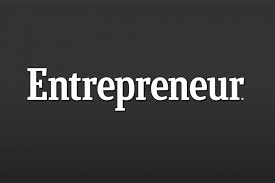
The Unspoken Truths of Startup Failures — 10 Cautionary Tales That Will Make You Rethink What Success Truly Means
By Roy Dekel | Edited by Chelsea Brown | Entrepreneur Magazine | January 31, 2025
Extractive Summary of the Article | Listen
3 key takeaways from the article
- The startup world is often painted as a land of endless possibilities, where big dreams meet big checks. But there’s a side to startups that’s less celebrated — the graveyard of ambitious ventures that, despite raising significant capital, ultimately failed.
- Delving into the hard truths of startup failures through the lens of ten companies including Theranos, WeWork, Quibi, Jawbone, MoviePass, Fyre Festival, Beepi, Pets.com, Homejoy and Better Place which raised enormous capital only to crash and burn. Each story offers a unique and sobering lesson for aspiring entrepreneurs and investors alike.
- Key takeaways for entrepreneurs are: Validate before scaling, Spend wisely, Prioritize governance, Adapt quickly, and Be transparent.
(Copyright lies with the publisher)
Topics: Startups, Entrepreneurship Failure, Entrepreneurs, Resilience, Market Research, Trust, Quick Adaptation, Good Governance, Wise Spending
Click for the extractive summary of the articleThe startup world is often painted as a land of endless possibilities, where big dreams meet big checks. Entrepreneurs and investors alike revel in stories of unicorn valuations and rapid success. But there’s a side to startups that’s less celebrated — the graveyard of ambitious ventures that, despite raising significant capital, ultimately failed.
The author delve into the hard truths of startup failures through the lens of ten companies that raised enormous capital only to crash and burn. Each story offers a unique and sobering lesson for aspiring entrepreneurs and investors alike.
- Theranos. Capital raised: $700 million. The company promised a medical revolution with its blood-testing technology. The problem? The tech never worked. Fraudulent claims and lack of transparency brought down this high-flying company. Lesson: Overselling and under-delivering can destroy credibility, no matter how charismatic the founder is.
- WeWork. Capital raised: $22 billion. The coworking space giant imploded due to reckless spending, poor governance and an unsustainable growth strategy. Lesson: Even the best branding can’t save a business with broken fundamentals.
- Quibi. Capital raised: $1.75 billion. With a vision of revolutionizing streaming for mobile users, Quibi failed to read the room. Lack of demand, poor timing and misguided execution doomed it within six months of launch. Lesson: Market research is essential before scaling.
- Jawbone. Capital raised: $930 million. Jawbone failed to keep pace with competitors in the wearable tech market. Poor product quality and lack of differentiation led to its downfall. Lesson: Innovation must evolve alongside consumer expectations.
- MoviePass. Capital raised: $68 million. MoviePass’s unsustainable subscription model of unlimited movies for $9.95/month sounded great — too great. The company bled money and alienated its customer base with constant policy changes. Lesson: Overgenerosity can backfire without a sustainable revenue strategy.
- Fyre Festival. Capital raised: $26 million. Marketed as an exclusive luxury event, Fyre Festival delivered chaos instead. Mismanagement, overpromises and outright fraud turned it into a cultural punchline. Lesson: Execution matters just as much as vision.
- Beepi. Capital raised: $150 million. Beepi aimed to simplify car sales with an online marketplace but couldn’t scale operations effectively. High overhead costs and thin margins buried the company. Lesson: Operational efficiency is as critical as market demand.
- Pets.com. Capital raised: $300 million. One of the most infamous dot-com busts, Pets.com struggled with high shipping costs and poor profitability, despite heavy marketing. Lesson: Growth without a viable financial model is unsustainable.
- Homejoy. Capital raised: $40 million. A cleaning services platform, Homejoy crumbled under legal challenges related to worker classification and inability to retain customers. Lesson: Ignoring legal risks can sink even the most promising ventures.
- Better Place. Capital raised: $850 million. This electric vehicle startup bet big on battery-swapping stations but underestimated adoption challenges and infrastructure costs. Lesson: Timing and ecosystem readiness are crucial for innovation-heavy industries.
Key takeaways for entrepreneurs
- Validate before scaling: No amount of capital can fix a product that doesn’t meet a real need.
- Spend wisely: Burn rate management is critical. Flashy spending might attract attention, but sustainability drives success.
- Prioritize governance: Strong leadership and clear accountability can prevent internal chaos.
- Adapt quickly: Markets change fast. Companies must evolve their strategies to stay relevant.
- Be transparent: Trust is the currency of long-term success. Overhyping or hiding flaws is a recipe for disaster.
